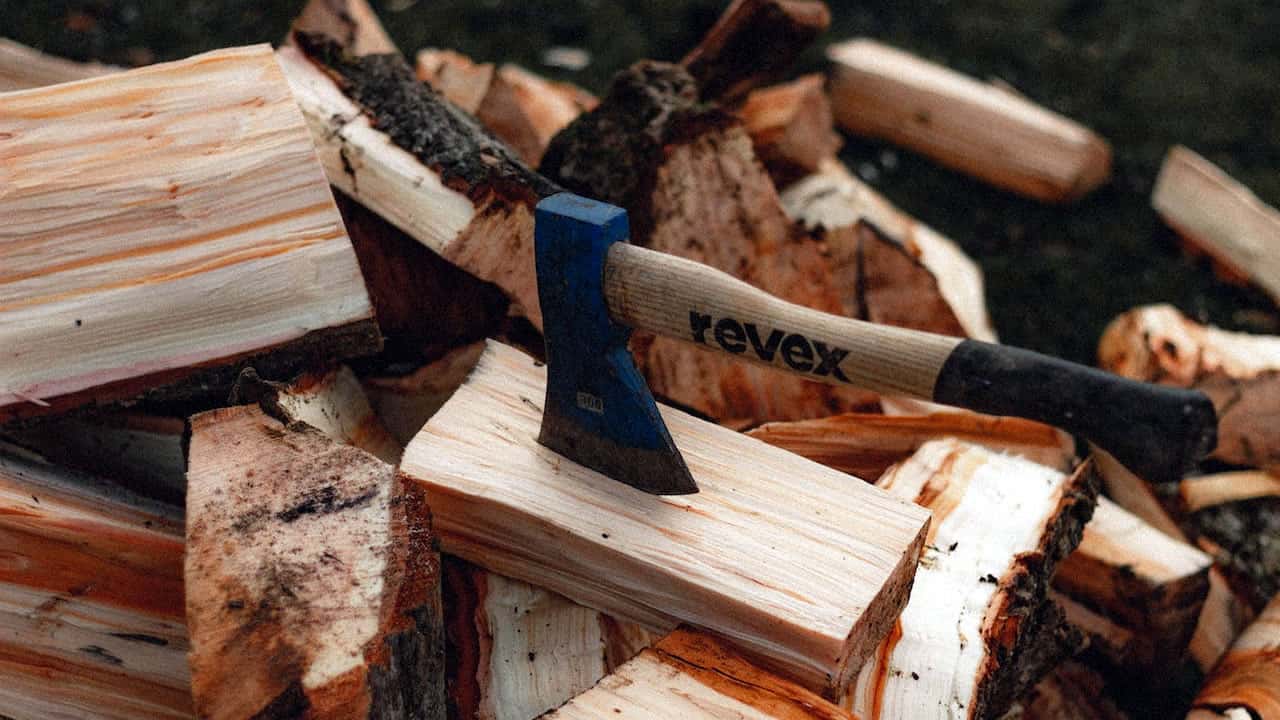For anyone involved in wood cutting, whether as a professional or a hobbyist, choosing the right axe is crucial. Axes are designed for specific tasks, and using the right one can make your work more efficient, safe, and enjoyable. In this comprehensive guide, we’ll explore the best axes for different woodcutting tasks, such as splitting, chopping, and carving, to help you make an informed decision.
Understanding the Basics
Before diving into specific axe types, let’s understand what makes a good axe:
- Quality of Material: High carbon steel is generally the best material for axe heads. It maintains a sharp edge and is durable.
- Handle Composition: Handles can be made from wood (traditional and offers good shock absorption), fiberglass (lightweight and durable), or metal (durable but heavy and less shock absorbent).
- Weight and Balance: The weight should be appropriate for the task and the user. A well-balanced axe reduces user fatigue and improves accuracy.
- Head Design: The shape of the axe head should be suited to the task – splitting, chopping, or carving.
Axe Types and Their Uses
Before diving into specific recommendations, it’s essential to understand the types of axes available and their intended uses.
1. Felling Axes:
Designed for cutting down trees, felling axes have a sharp, thin blade that cuts deep into wood. They are ideal for chopping tasks where you need to cut across the wood grain.
2. Splitting Axes and Mauls:
These are designed to split wood along its grain. Splitting axes have a head that widens quickly, forcing the wood apart, while mauls are heavier, combining the features of an axe and a sledgehammer.
3. Hatchets:
A hatchet is essentially a small, one-handed axe, perfect for light chopping and splitting, making kindling, and other small tasks.
4. Broad Axes:
These are used in carpentry for hewing logs into beams, shaping wood, and other woodworking tasks.
5. Carving Axes:
Specifically designed for detailed woodwork, carving axes offer precision and are great for artistic wood carving.
Best Axes for Chopping: Felling the Giants
When it comes to chopping or felling trees, you need an axe that is sharp, well-balanced, and has enough power to cut through the wood efficiently.
1. Gränsfors Bruk American Felling Axe
- Ideal for: Large tree felling
- Features: Long handle for power, excellent balance, hand-forged head
- Pros: Durable, high-quality steel; ergonomic handle
- Cons: Higher price point
2. Husqvarna 26″ Wooden Multi-Purpose Axe
- Ideal for: General chopping and felling
- Features: Versatile design, Swedish steel head
- Pros: Good value for money; versatile for various tasks
- Cons: May require more frequent sharpening
Best Axes for Splitting: Cracking the Code
Splitting wood requires an axe that can efficiently force the wood apart without getting stuck. Splitting axes and mauls are perfect for this task.
1. Fiskars X27 Super Splitting Axe
- Ideal for: Large logs and tough wood
- Features: FiberComp handle, perfect weight distribution
- Pros: Very efficient, reduced hand strain, long-lasting sharpness
- Cons: Non-traditional design may not appeal to all
2. Estwing Fireside Friend Axe
- Ideal for: Small to medium-sized logs
- Features: One-piece steel construction, shock reduction grip
- Pros: Durable, comfortable grip, excellent splitting ability
- Cons: Slightly heavier than some alternatives
Best Hatchets for Light Chopping and Kindling
For smaller tasks like making kindling or light chopping, a good hatchet is indispensable.
1. Hults Bruk Tarnaby Hatchet
- Ideal for: Kindling, small chopping tasks
- Features: Swedish steel, compact design
- Pros: Sharp, durable, beautifully crafted
- Cons: Higher price for a small axe
2. Gerber Bear Grylls Survival Hatchet
- Ideal for: Camping, survival situations
- Features: Non-slip rubber grip, stainless steel blade
- Pros: Very portable, great for outdoor use
- Cons: Less effective on larger tasks
Best Axes for Carpentry: Precision and Power
Carpentry tasks like hewing and shaping wood require axes that offer precision without sacrificing power.
1. Gränsfors Bruk Carpenter’s Axe
- Ideal for: Woodworking and carpentry
- Features: Straight edge and thin blade, hand-forged
- Pros: Excellent control, high-quality construction
- Cons: Pricey, more specialized use
2. Hultafors Classic Hunting Axe 850G
- Ideal for: Carpentry and general use
- Features: Versatile design, good balance
- Pros: Durable, versatile for various woodworking tasks
- Cons: Might be too heavy for some intricate carpentry work
Best Axes for Carving: Artistic Precision
For detailed and artistic wood carving, carving axes are your best bet. These axes offer control and precision for intricate work.
1. Gränsfors Bruk Small Carving Hatchet
- Ideal for: Detailed wood carving
- Features: Curved bit, hand-forged head
- Pros: Excellent control, sharp edge, ideal for detailed work
- Cons: Expensive, more niche use
2. Robin Wood Carving Axe
- Ideal for: General wood carving
- Features: Compact design, carbon steel head
- Pros: Affordable, great for beginners and experts
- Cons: Less prestigious brand than some alternatives
Maintenance: Keeping Your Axe in Top Shape
No matter which axe you choose, maintenance is key:
- Sharpening: Regularly sharpen your axe to maintain its effectiveness.
- Storage: Store your axe in a dry place and use a sheath to protect the blade.
- Handle Care: For wooden handles, occasionally treat with linseed oil to prevent drying and cracking.
Safety First
Always remember safety when using axes:
- Personal Protective Equipment: Wear safety glasses, gloves, and appropriate footwear.
- Proper Technique: Learn the correct technique for each task to prevent injuries.
Conclusion
Choosing the right axe for your woodcutting tasks makes a world of difference in terms of efficiency, safety, and enjoyment. Whether you’re felling trees, splitting logs, carving wood, or preparing a campsite, there’s an axe specifically designed for the job. Remember, the best axe is not just about the brand or price; it’s about how well it fits the task at hand and suits your needs. Invest in a good-quality axe, take care of it, and it will serve you well for many years to come.
